I’m sure we are all familiar with the Shutdown Event Tracker. Hypervisor crash for “no reason”? Have a bunch of servers power down hard “by accident”? It happens to all of us. What’s annoying about this, specifically in a XenApp/RDS environment is the fact that when a regular user logs in they will see this message unless an administrator has already gone in and removed it.
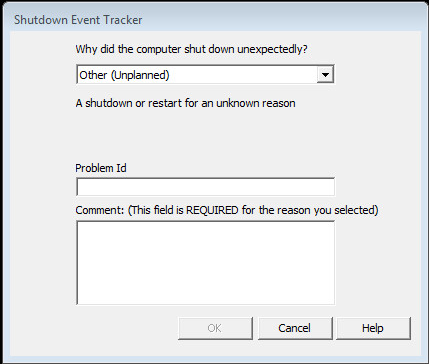
Now, you could just remove it via GPO all together, but I’m not really a fan of that. I would think that this would be available for administrators only, and not regular users. The GPO supplied is a computer based GPO and does not allow that type of granularity. This is in Computer Configuration / Policies / System. As you can see it basically has no options for users.
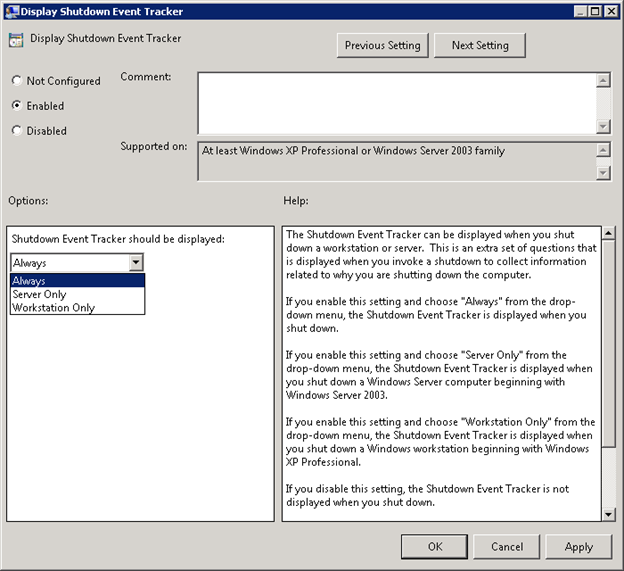
Simple fix though. After about two seconds of troubleshooting I found that this tracker is controlled by c:\windows\system32\shutdown.exe. So, you could simply just take ownership of this file and remove users read access to this and that works fine. However, if you want to do this in some scale, you can setup a Software Restriction policy and apply it to your RDS/XenApp users. This is also pretty simple.
Drill down to User Configuration / Policies / Windows Settings / Software Restriction Policies. Go to Action and select “New Software Restriction Policy”.
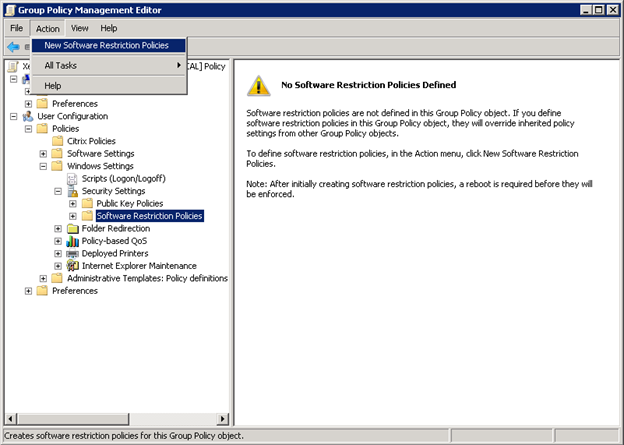
This will create some new folders under Software Restriction Policies. Drill down to Additional Rules and right-click “New Path Rule”.
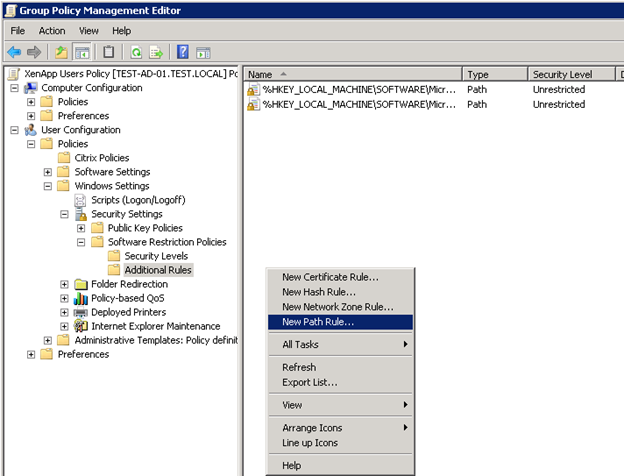
Simply type in the path and hit “ok”
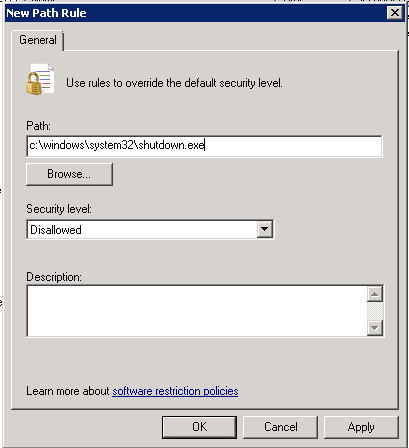
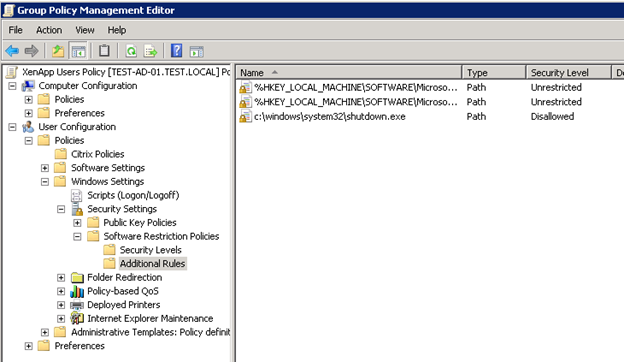
Make sure this policy is applied only to non-admin users and not administrators. I have a large GPO that I apply to all regular users that access XenApp, so I simply applied it there. That’s about it. Now when your non-admin users’ login they will not be allowed to launch shutdown.exe, which in turn will stop the Shutdown Event Tracker from appearing.
You can validate this by running a command prompt as a regular user. They should be getting this message.

Have fun!

Very useful.
Didn’t realise that Users would see this until an Admin logs in and actions it.
Further, didn’t realise it was associated with shutdown.exe.
As we have had 2 unexpected shutdown’s in as many weeks (fixing those issues), this will come in very handy.
Thanks for the share!
Thanks Ryan, indeed very useful. This solution will solve a problem we had for a while.
Very useful, thanks a lot!
We also didn’t know that users will see the Shutdown Event Tracker message.
[…] Disable Shutdown Event Tracker for non-administrative users […]
And what if all user on terminal server need to run “shutdown.exe -L” ?
Is there another solution to prevent only users from getting window with shutdown tracker?
They should just be able to type in “logoff”. This command performs the same function as shutdown -L.